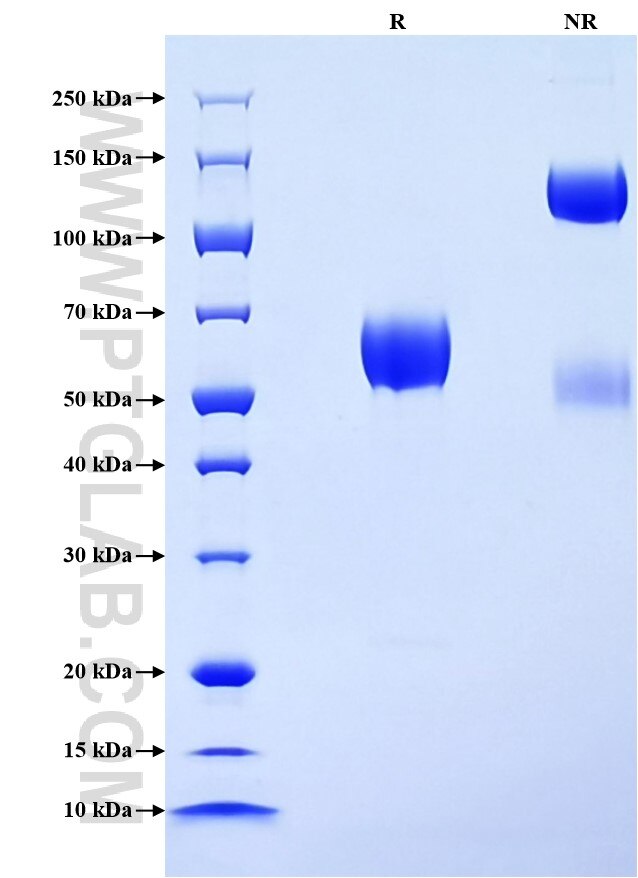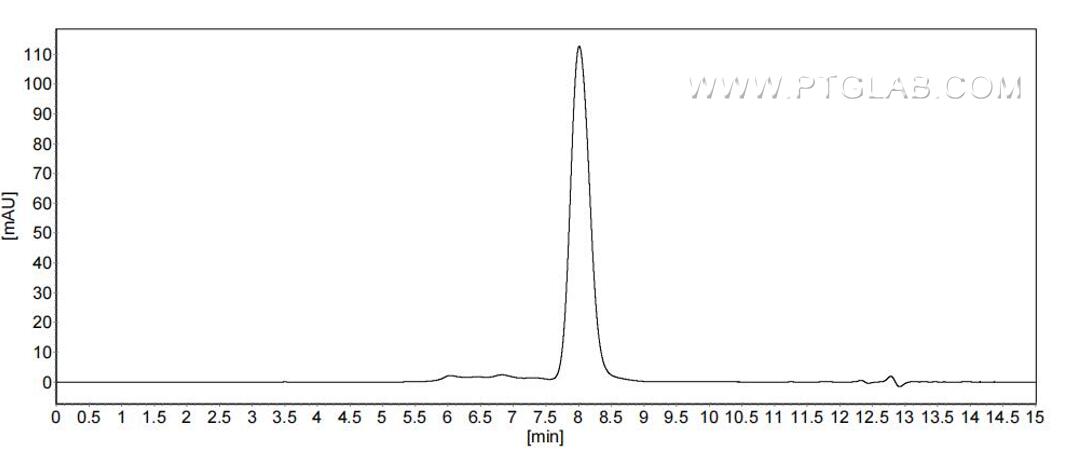Recombinant Mouse CD2 protein (rFc Tag) (HPLC verified)
Species
Mouse
Purity
>90 %, SDS-PAGE
>90 %, SEC-HPLC
Tag
rFc Tag
Activity
not tested
Cat no : Eg1403
Validation Data Gallery
Product Information
| Purity | >90 %, SDS-PAGE >90 %, SEC-HPLC |
| Endotoxin | <0.1 EU/μg protein, LAL method |
| Activity |
Not tested |
| Expression | HEK293-derived Mouse CD2 protein Arg23-Ser203 (Accession# P08920) with a rabbit IgG Fc tag at the C-terminus. |
| GeneID | 12481 |
| Accession | P08920 |
| PredictedSize | 47.0 kDa |
| SDS-PAGE | 52-70 kDa, reducing (R) condition |
| Formulation | Lyophilized from 0.22 μm filtered solution in PBS, pH 7.4. Normally 5% trehalose and 5% mannitol are added as protectants before lyophilization. |
| Reconstitution | Briefly centrifuge the tube before opening. Reconstitute at 0.1-0.5 mg/mL in sterile water. |
| Storage Conditions |
It is recommended that the protein be aliquoted for optimal storage. Avoid repeated freeze-thaw cycles.
|
| Shipping | The product is shipped at ambient temperature. Upon receipt, store it immediately at the recommended temperature. |
Background
CD2 is a cell surface glycoprotein present on a majority of thymocytes. The CD2 antigen was identified as one of the earliest T cell markers and was shown to be important for thymocyte development. Notably, only a minor percentage of B cells express CD2 in humans while CD2 is broadly expressed on murine B cells. CD2 is a transmembrane glycoprotein of the immunoglobulin superfamily expressed on the surface of T cells, NK cells, thymocytes and dendritic cells. The glycoprotein CD2 is a costimulatory receptor expressed mainly on T and NK cells that binds to LFA3.
References:
1.Haynes BF, et al. (1988) J Immunol. 141(11):3776-84. 2.Vollger LW, et al. (1987) J Immunol. 138(2):358-63. 3.Kingma DW, et al. (2002) Cytometry. 50(5):243-8. 4.Yagita H, et al. (1989) Eur J Immunol. 19(12):2211-7. 5.Krensky AM, et al. (1983) J Immunol. 131(2):611-6. 6.Matsui T, et al. (2009) J Immunol. 182(11):6815-23. 7.Binder C, et al. (2020) Front Immunol. 11:1090.


